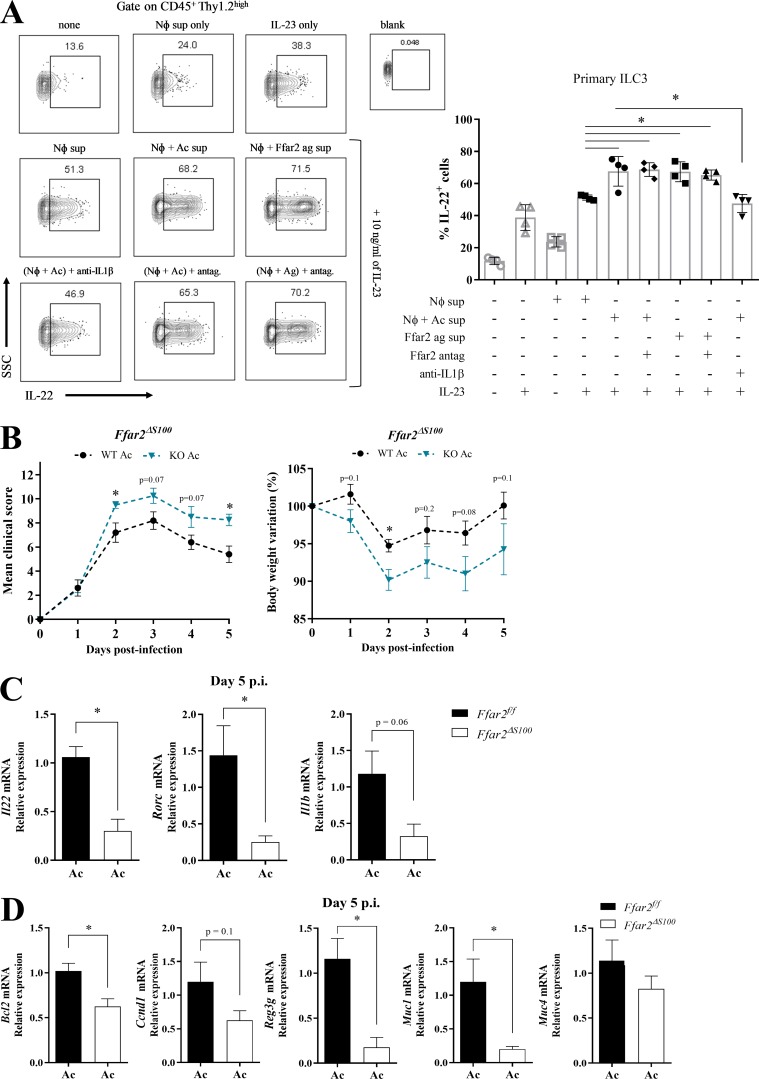Figure 8.
Acetate promotes neutrophil–ILC3 cross-talk through IL-1β. (A) Percentages of IL-22–producing primary ILC3s that were isolated from Rag1−/− mice and triggered in vitro with IL-23 and supernatant of neutrophils in the indicated combinations. Neutrophils were stimulated as follows: Nφ sup, LPS + C. difficile supernatant; Nφ + Ac sup, LPS + C. difficile supernatant + acetate; Nφ + Ffar2 ag sup: LPS + C. difficile supernatant + Ffar2-agonist. Anti–IL-1β blocking antibody or Ffar2-antagonist (antag.) was added, as indicated. Representative flow cytometry plots are presented on the left (n = 4). Top: Stimulations with IL-23 or neutrophil supernatant only. Middle: Stimulations combining IL-23 and various neutrophil supernatants. Bottom: Addition of anti–IL-1β or Ffar2 antagonist. SSC, side scatter. (B) Clinical score and body weight variation of Ffar2fl/fl and Ffar2ΔS100 (Ffar2fl/fl × S100-Cre) mice that were treated with acetate and infected with C. difficile (n = 4–5). Ffar2ΔS100 and Ffar2fl/fl littermates were infected at the same time. (C and D) Il22, Rorc, Il1b (C), and IL-22 target genes mRNA expression (D) in the colon of acetate-treated Ffar2fl/fl and Ffar2ΔS100 mice on day 5 p.i. (n = 4–5). Results are representative of at least two independent experiments with three to four mice in each (A) or pooled results from two independent experiments with two to three mice in each group (B–D). All mice used were littermates. Results are presented as mean ± SEM. *, P < 0.05.

